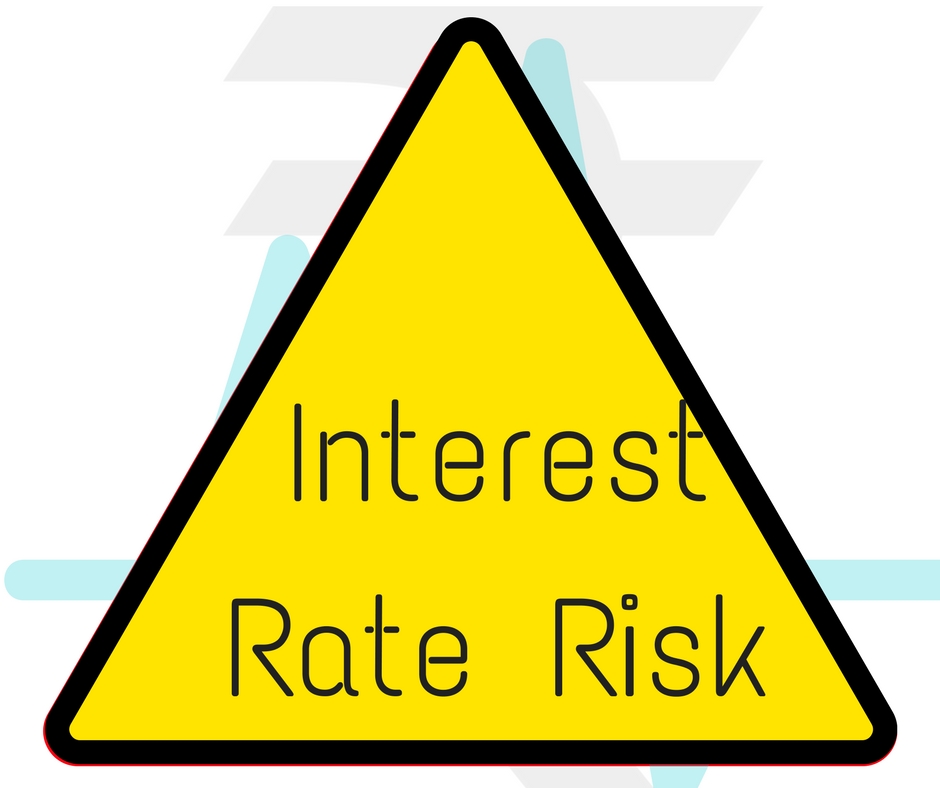What is Interest Rate Risk?
- 30 April 2017 | 1643 Views | By Mint2Save

Interest rate risk is one of types of risk that are not specific to the company that affect the return on investments made in stocks and bonds. Interest rate risk is the unforeseen change in the interest rates that will badly affects the value of investment. For example, a bond’s price falls as interest rates rises.
Interest rate risk more affects the value of bonds than stocks, and it is a main risk for all bondholders. Because as interest rates falls, bond prices will increase, and bond prices falls with a rise in interest rates. The principle states that as interest rates rise, the opportunity cost of holding bond decreases because investors would realize better yields by switching to other investments that imitate the higher interest rate. Such as in case a 5% bond is worth more if interest rates fall, as the bondholder get a fixed rate of return relation to the market, which is offering a lower rate of return as a result of the fall in rates
Some more examples of interest rate risk are:
Certain investments earn interest at a variable rate of interest for example money in bank deposit accounts and certain short term investments values goes up or down with changes in interest rates for example, Treasury bills and other bills.
Few companies hold investments in marketable bonds either in government bonds or corporate bonds. These bonds change in value with movement in long-term interest rates. In general terms short term bonds carry less interest risks and long term carry high interest risks.
Several economic factors affect the level and movement of interest rates in the economy. Generally the level of interest rates is expected to increase when the economy is growing and interest rates often decrease during economic downfalls. Likewise, increasing inflation can lead to increasing interest rates even though this is not necessarily the case, and at some stage rise in rates themselves become provider to higher inflation. Modest inflation will similarly tend to result in lesser interest rates. Thus, Inflation is one of the most powerful factors affecting on interest rates.
Banking corporations encounter interest rate risk in many ways such as:
1) Repricing risk: The basic and most considered form of interest rate risk arises due to the timing differences in the maturity for fixed-rate and for floating rate of banking corporation assets and liabilities. Such repricing difference may expose a bank’s income and economic value to unexpected fluctuations as interest rates differ.
2) Yield curve risk: Yield curve risk arises when unexpected change of the yield curve has unfavourable effects on a banking corporation’s income or economic value. The yield curve may move because of changing relationships between different maturities of interest rate of the same market.
3) Basis risk: It is the risk arising from imperfect correlation in the interest rates changes in different financial markets or else similar repricing characteristics. Differentiation in interest rate changes can give rise to unanticipated changes in the cash flows and earnings spread between assets and liabilities.
4) Optionality risk: An supplementary source of interest rate risk which arises from a change in the timing or scope of a financial instrument’s cash flows due to changing market interest rates. This risk arises from the options set in many banking corporation assets, liabilities and OBS positions such as callable bonds, residential mortgages, time deposits redemptions, and non- monetary deposits.
Some ways in which interest rate risk can be controlled or managed include:
1) Investment in floating rate rather than fixed rate securities.
2) Invest only in securities due to maturity in the short term.
3) Buying interest rate derivatives such as interest rate options, caps, futures and swaps.
4) Investors who want to make a change to their exposure because they have a mostly strong confidence that rates will increase might want to reduce interest rate risk. The most ordinary solution is to shift into shorter maturity to the fixed income vehicles that offer less interest rate risk and are less affected by rising rates.
5) Effective communication of the board’s purpose regarding interest rate risk taking and risk management is essential and should be accomplished through policies that are re-examine and updated periodically.
Interest rate risk affects the companies that borrow or lend money, revealing them to higher interest costs or lower interest income, reducing profits. The size of exposure depends on the company’s funding or investment requirements. The point of risk depends partly on the size of the exposure, but also on the duration of the exposure and the risk of adverse interest rate movements in the period of exposure. With the help of interest rate risk management it will benefit as it reduces earning volatility, improve cash flow forecasting, defined financial budgets on corporate risk tolerance and improved corporate credit ratings and many more.









